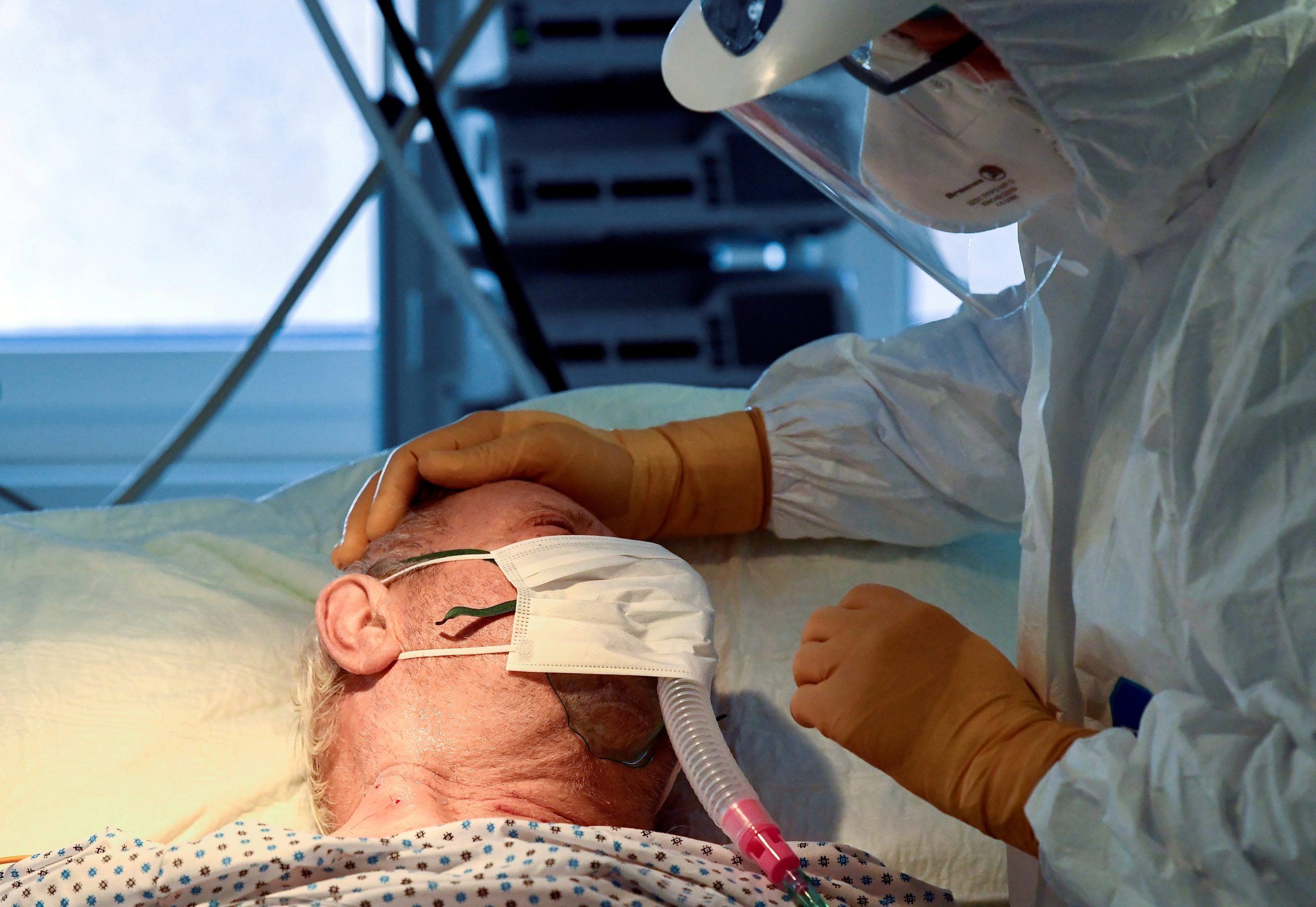- Exactly six months ago, Chinese officials in Wuhan reported the coronavirus outbreak to the World Health Organization.
- Since then, COVID-19 has killed more than 500,000 people and infected more than 10.5 million worldwide.
- Here’s what to know about the coronavirus – including symptoms, spread, and risk factors – in 29 charts, maps, and graphics.
- Visit Business Insider’s homepage for more stories.
Tuesday marks six months since Chinese health officials in Wuhan reported the coronavirus outbreak to the World Health Organization.
As the world’s case total and death toll continue to climb, a growing collection of data and research is providing insights into the ongoing pandemic.
DataTicker – Covid 19 Global and US
These 29 charts and graphics lay out what to know.
This chart shows the rate at which the coronavirus case total has shot up worldwide.
The true number of infected people is far higher than the official total, however, since many mild and asymptomatic cases have not been tested, confirmed, or counted.
Here's where cases and deaths have been confirmed around the world.
The US has reported more than 2.6 million coronavirus cases — the most in the world.
More than 129,000 people in the US have died as of Tuesday.
The US's epidemic has grown dramatically since the end of January.
From April 9 to 15, more than 13,000 people in the US died from COVID-19, surpassing the nearly 12,500 people killed on average each week in 2018 by heart conditions and the 11,500 people killed weekly by cancer.
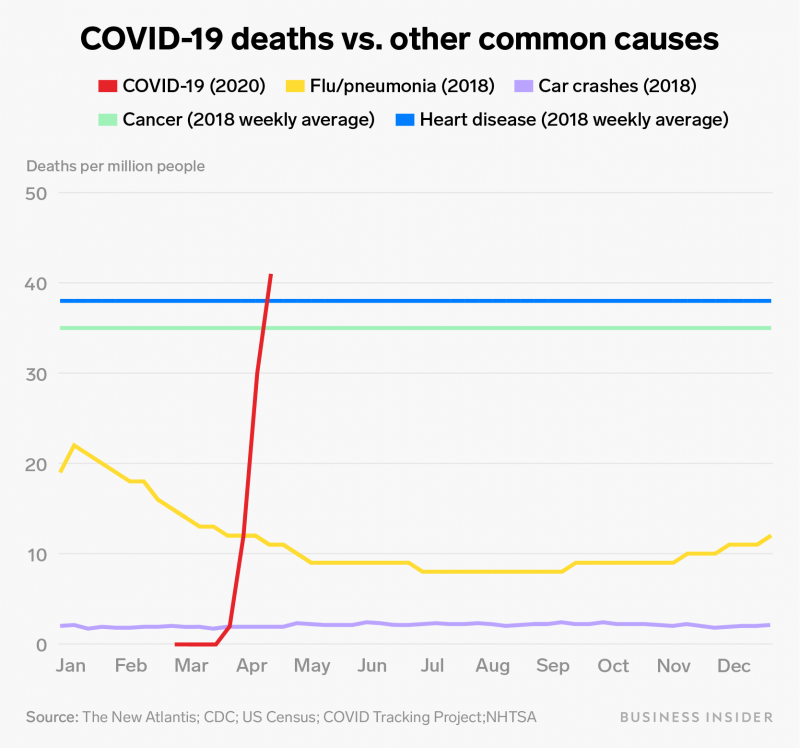
New York had the largest coronavirus outbreak in the US, but new daily cases, hospitalizations, and deaths there have dropped since late April.
Cases are shooting up in many other parts of the US, however.
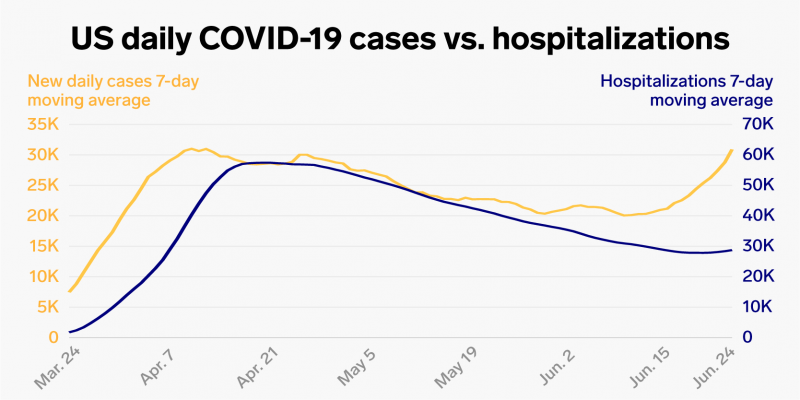
Hospitalizations have started to climb again, too.
At least 15 states and cities that had started to reopen have paused or reversed those plans as cases started to rise.
California now has the country's second-highest case total.
On Sunday, Gov. Gavin Newsom ordered bars in seven Southern California counties to close and recommended that health officials in eight additional counties do the same. He had mandated the use of face masks statewide starting June 18.
As cases spike, at least 15 states have put statewide travel restrictions in place. Some require 14-day quarantines for travelers or a recent negative COVID-19 test.
Many experts suggest the new surge came because many states reopened businesses before outbreaks were well controlled.
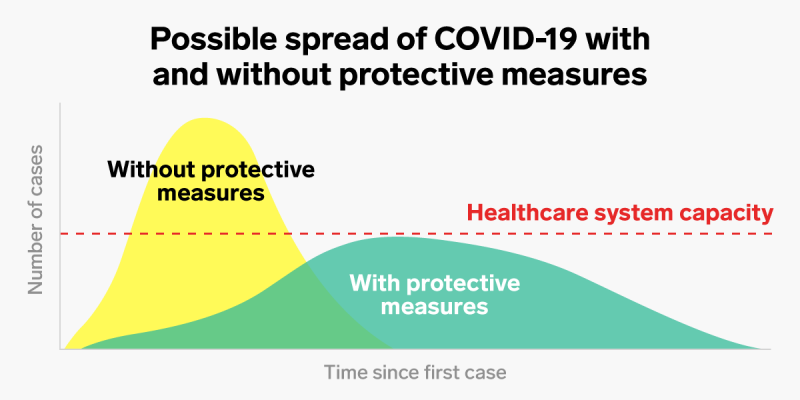
The goal of lockdowns is to slow the virus' spread and promote social distancing in order to keep the outbreak within the capacity of healthcare systems. Otherwise, healthcare facilities and staff are at risk of being overrun.
Reduced social contact is one of the most effective ways to lower your risk of getting infected — here's the difference between social distancing, quarantines, and self-isolation.
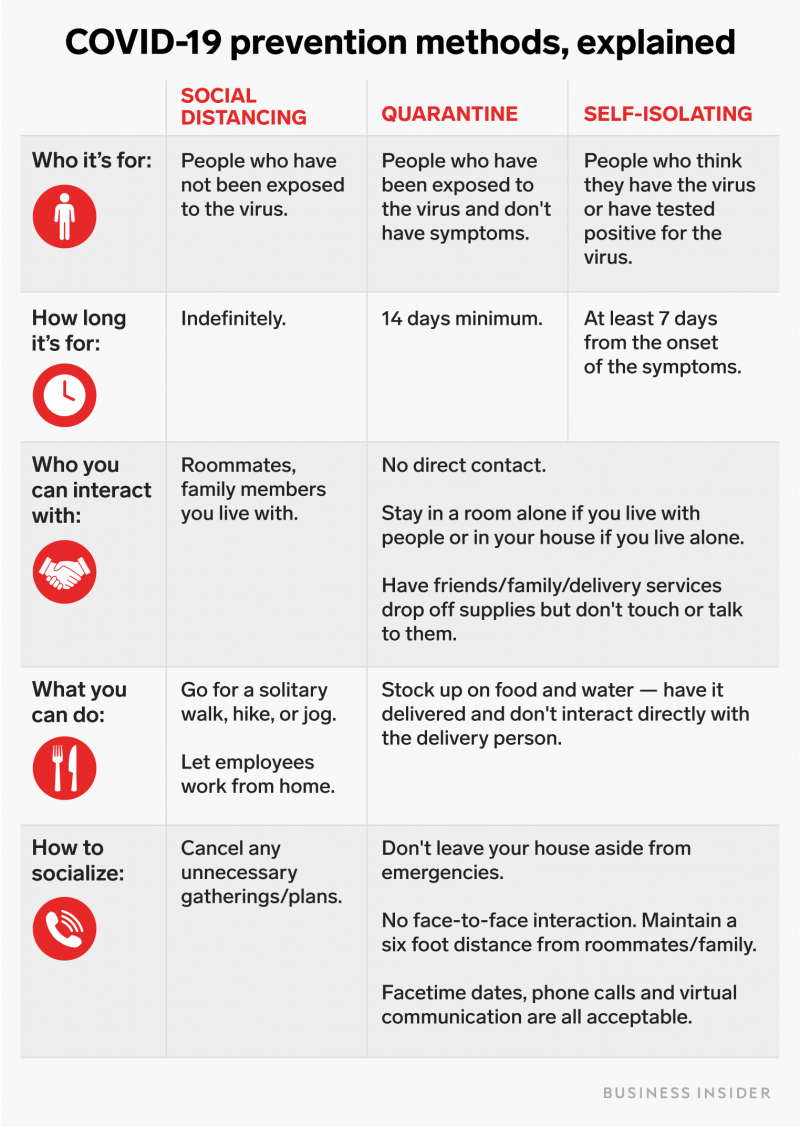
However, lockdowns have taken a heavy toll on the US economy. The country's job losses since February have been far deeper than in any other US recession since the Great Depression.

Over 20 million US jobs were lost in April alone.
More mask wearing could also help stymie the virus' spread, since the coronavirus typically spreads via airborne droplets from an infected person's coughs, speech, or sneezes.
Here's a breakdown of all the different types of face masks and who should wear them.
Widespread testing is also crucial to understand the scale of an outbreak. Here's how a CDC coronavirus swab test works.
In the US, federal delays in rolling out COVID-19 testing initially made it hard to track where new cases were spreading.
Antibody tests can tell you whether you've ever been infected with the coronavirus, but their accuracy varies widely, and what a positive result actually means depends on several factors.

Even very good tests can deliver false-positive results if the coronavirus hasn't spread much in a particular area. The chart above shows the positive predictive value - the likelihood that a positive test actually means you were infected - based on the underlying prevalence of the disease. Even a test that's 95% accurate is only a little better than a coin flip if less than 10% of the population was infected.
Read more about the positive predictive value of a coronavirus test here.
Of course, our best hope of ending the pandemic is with a vaccine. Here are the leading companies and organizations making progress on that so far.
Until then, assessing our risk of infection will be a standard part of making decisions about day-to-day activities.
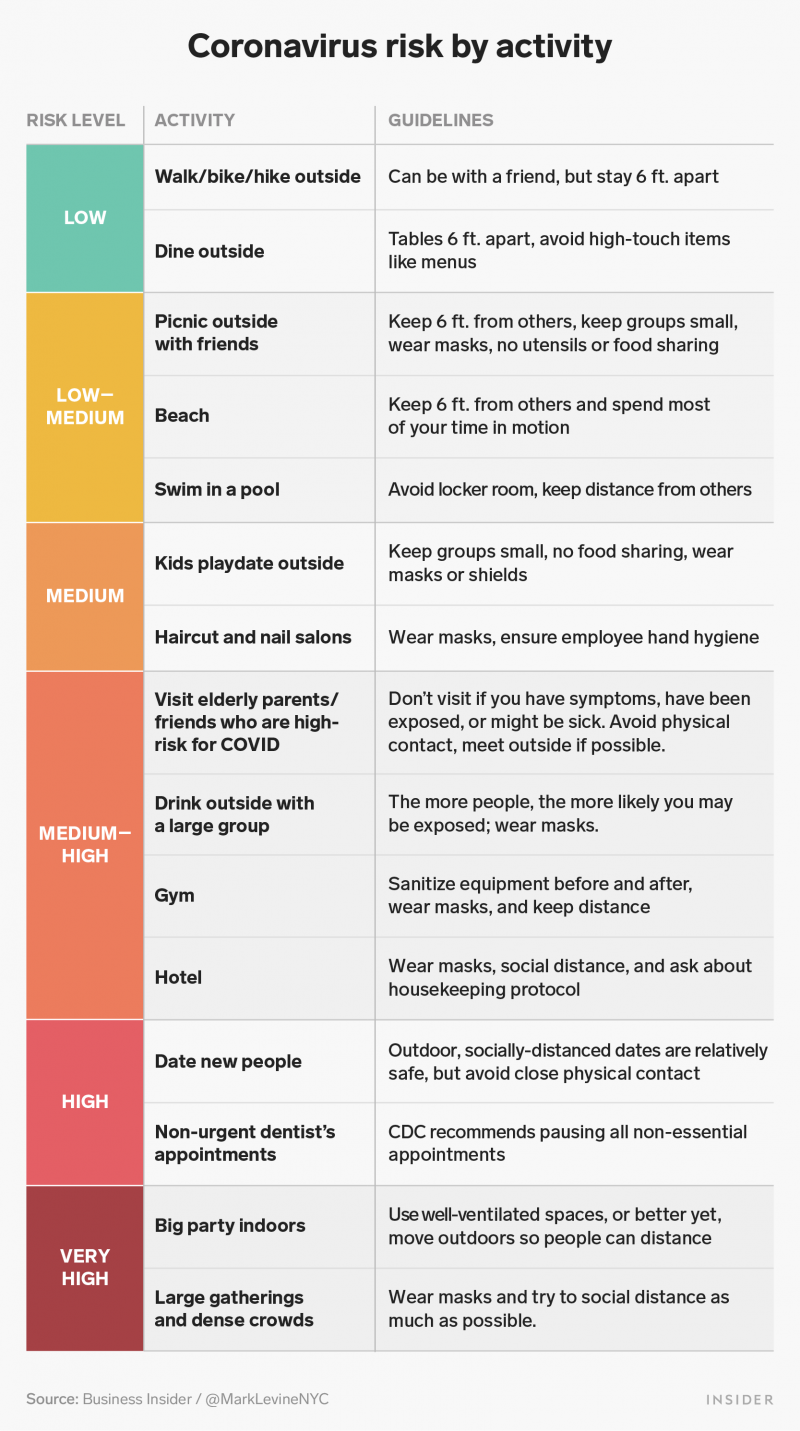
As restaurants, bars, hair salons, as well as many homes and offices re-open, it's good to remember that some activities are still far more risky than others when it comes to contracting the coronavirus.
Four factors raise your risk of catching the virus: enclosed spaces, crowds, close contact with others, and difficulty social distancing.

Those risk factors apply to schools as well.
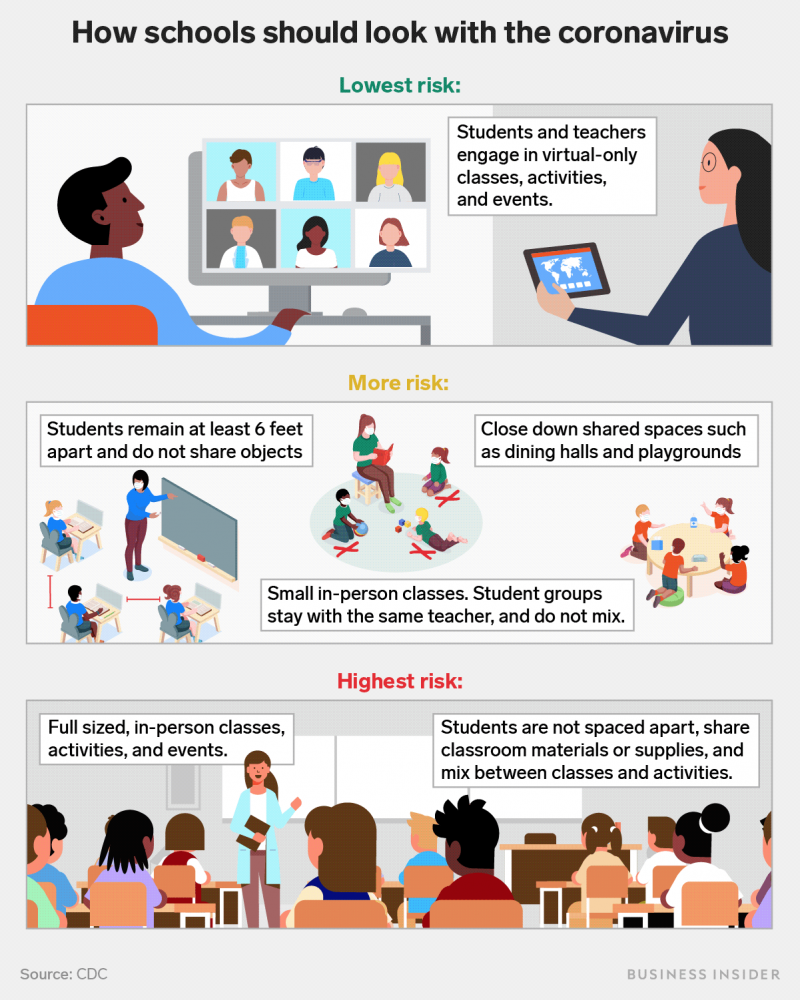
This graphic shows what schools across the country need to keep in mind when weighing the risks of reopening their classrooms amid the pandemic, according to the US Centers for Disease Control and Prevention.
Airlines, too, are considering these four factors when instituting in-flight safety measures.
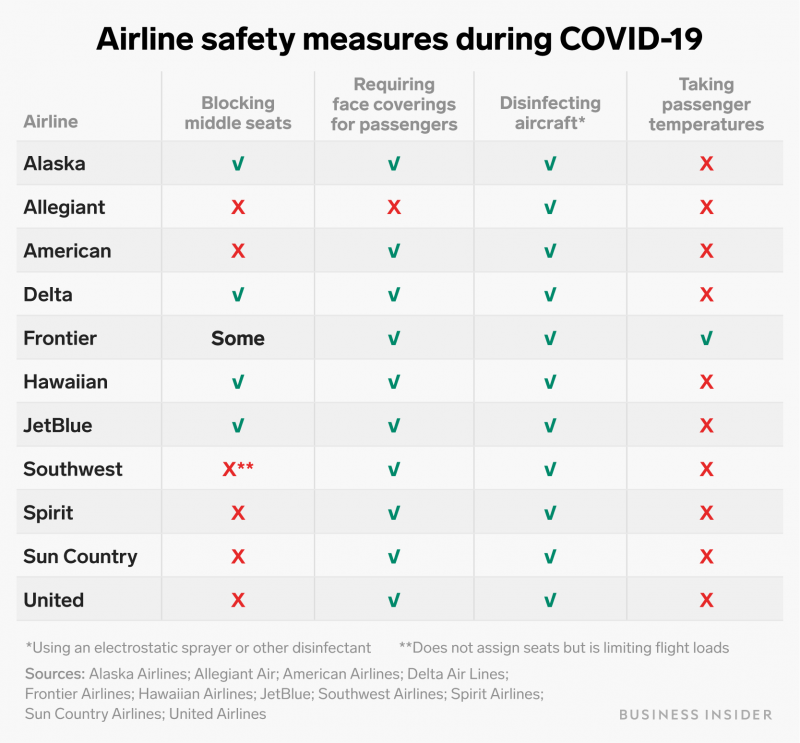
Most carriers in the US require their passengers to wear some form of face coverings, with only a small minority of airlines not mandating the practice.
But an infection doesn't pose an equal risk to all people. The chart below shows the death rates among different age groups in the US as of March.
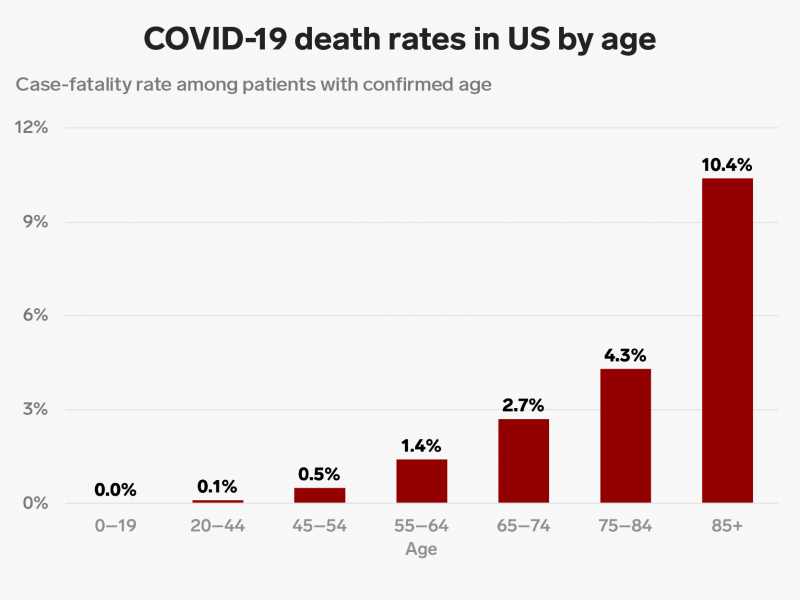
The virus also poses a higher risk to people with preexisting health conditions, such as diabetes, heart disease, and high blood pressure.

A study from the Chinese CDC found that among coronavirus patients, the preexisting condition with the highest death rate was heart disease.
In the US, Black communities have been disproportionately affected by the coronavirus. A CDC report found that 33% of the US's COVID-19 hospitalizations in March were Black patients, though Black people make up 18% of the overall US population.

"We do not think people of color are biologically or genetically disposed to get COVID-19," US Surgeon General Dr. Jerome Adams said in April. Rather, he added, Black Americans "have a higher incidence of the very diseases that put you at risk for severe complications from coronavirus."
The disparity is even more stark in Georgia — 83% of people hospitalized with COVID-19 in the state in March were Black.

"When you're in the middle of a crisis, like we are now with the coronavirus, it really does, ultimately, shine a very bright light on some of the real weaknesses and foibles in our society," Dr. Anthony Fauci, director of the National Institute of Allergy and Infectious Diseases, said in April.
He added: "We will get over coronavirus - but there will still be health disparities which we really do need to address in the African-American community."
Across the world, the coronavirus death rate is also higher for men than for women.

As the pandemic has progressed and more cases have been confirmed and observed, the list of symptoms has grown.
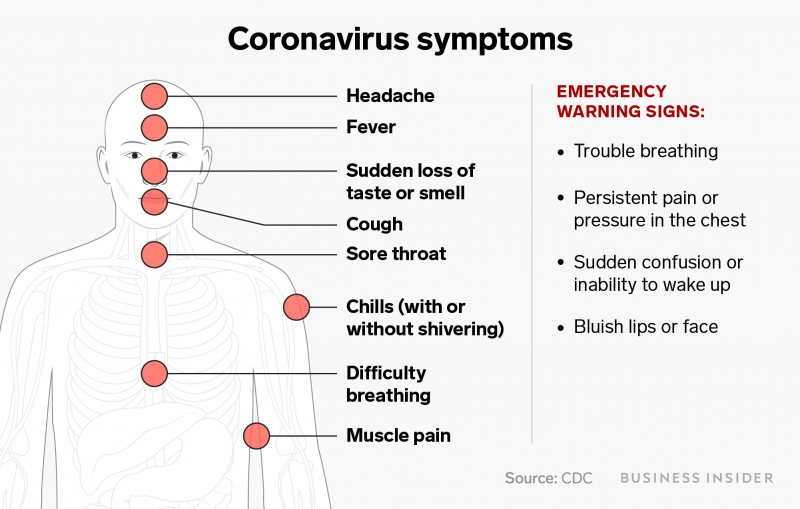
The coronavirus' most common symptoms are fever and cough. Around 20% of patients develop shortness of breath, which doctors recognize as one of the most concerning symptoms. Other symptoms include fatigue, diarrhea, body aches, swollen toes, a sore throat, congestion or a runny nose, and nausea or vomiting.
Scientists have found that the virus' average incubation period - the length of time between when a person gets infected and when they test positive for the illness - is five days. About 97% of people who get infected develop symptoms within 11.5 days.
The coronavirus is far more deadly than the flu.
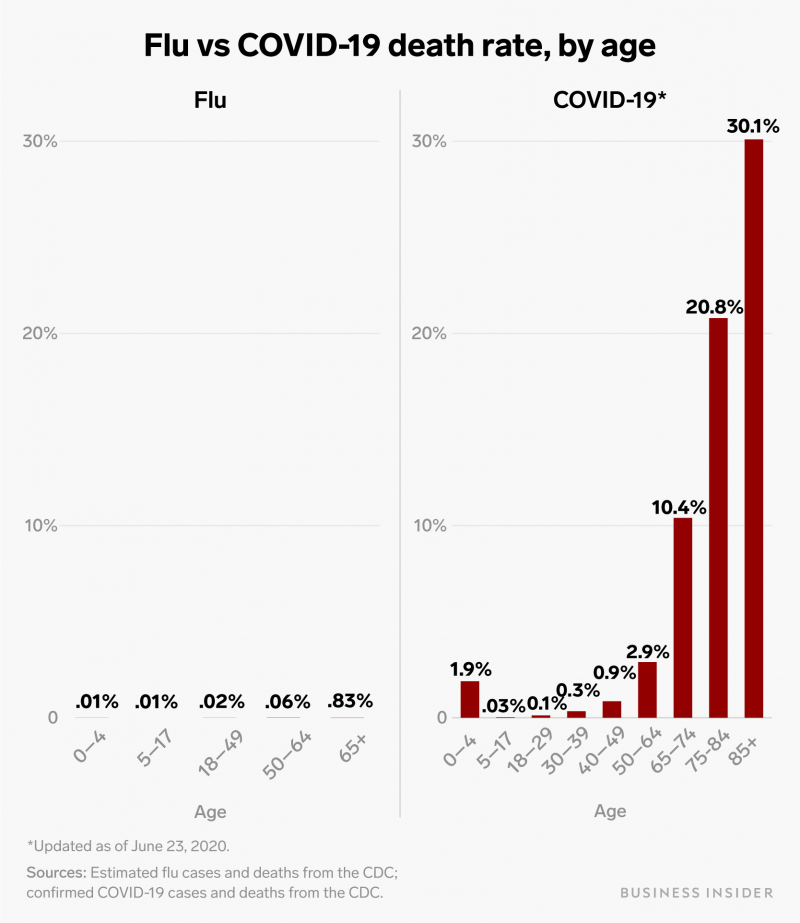
The chart above compares the estimated fatality rate for the flu to the ratio of confirmed deaths out of known COVID-19 cases. Because many coronavirus cases weren't confirmed, however, the true death rate is likely far lower.
An average coronavirus patient infects 2 to 2.5 others, a statistic known as the virus's R0 value.
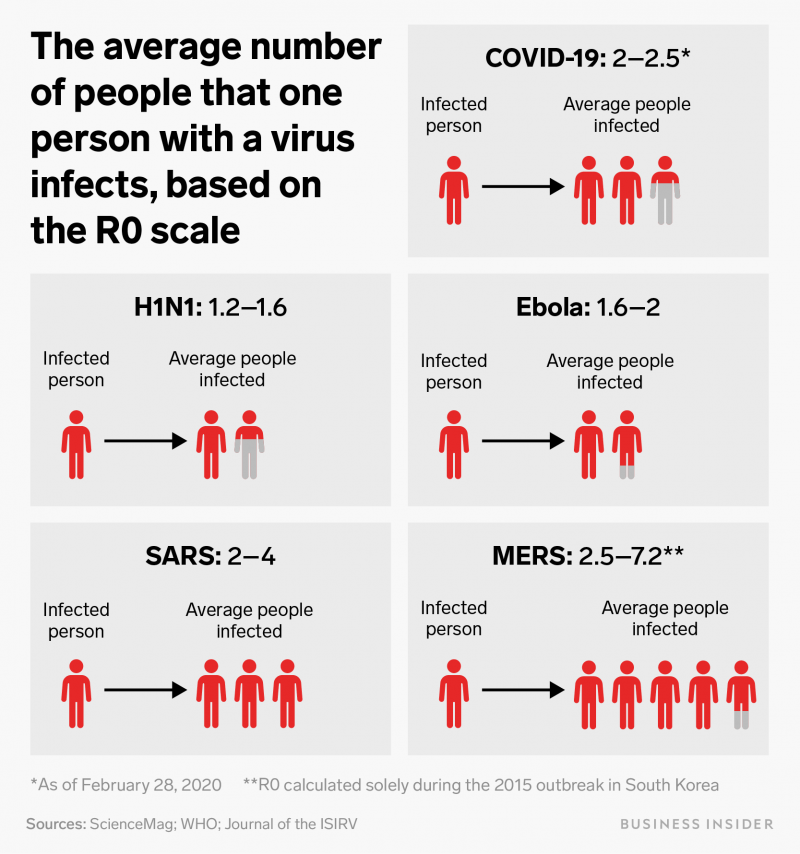
COVID-19 is more contagious than the seasonal flu. However, the R0 isn't fixed and can decrease with strong preventive measures.
Live coronavirus particles can survive for a time on surfaces, but that's not the primary way the virus spreads between people.

Andy Kiersz, Aria Bendix, Holly Secon, Morgan McFall-Johnsen, Lydia Ramsey Pflanzer, Thomas Pallini, and Tyler Sonnemaker contributed reporting.
